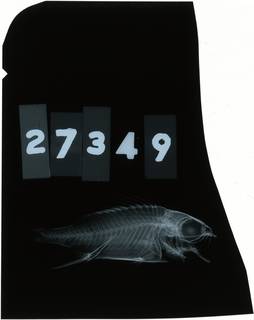WoRMS taxon details
Holocentridae Bonaparte, 1833
- Subfamily Holocentrinae Bonaparte, 1833
- Genus Holocentrus Scopoli, 1777
- Genus Neoniphon Castelnau, 1875
- Genus Sargocentron Fowler, 1904
- Genus Faremusca Whitley, 1933 accepted as Sargocentron Fowler, 1904
- Genus Holocenthrus accepted as Holocentrus Scopoli, 1777 (misspelling)
- Genus Holocentre accepted as Holocentrus Scopoli, 1777 (misspelling)
- Genus Holocentrum Cuvier, 1829 accepted as Holocentrus Scopoli, 1777 (misspelling)
- Genus Kutaflammeo Whitley, 1933 accepted as Neoniphon Castelnau, 1875
- Genus Sargocentoron accepted as Sargocentron Fowler, 1904 (unaccepted > misspelling - incorrect subsequent spelling)
- Subfamily Myripristinae Nelson, 1955
- Genus Corniger Agassiz, 1831
- Genus Myripristis Cuvier, 1829
- Genus Ostichthys Cuvier, 1829
- Genus Plectrypops Gill, 1862
- Genus Pristilepis Randall, Shimizu & Yamakawa, 1982
- Genus Adioryx Starks, 1908 accepted as Sargocentron Fowler, 1904
- Genus Myriopristis accepted as Myripristis Cuvier, 1829 (misspelling)
- Genus Myripristes accepted as Myripristis Cuvier, 1829 (misspelling)
- Genus Neomyripristis Castelnau, 1873 accepted as Myripristis Cuvier, 1829
- Genus Ostichtys accepted as Ostichthys Cuvier, 1829 (misspelling)
- Genus Plectotrypops accepted as Plectrypops Gill, 1862 (misspelling)
- Genus Plectripops accepted as Plectrypops Gill, 1862 (misspelling)
marine, brackish, terrestrial
Not documented
Description Tropical. Distribution: Atlantic, Indian, and Pacific Oceans. A single spine in pelvic fin; soft rays 5-8 (mode 7). Dorsal...
Description Tropical. Distribution: Atlantic, Indian, and Pacific Oceans. A single spine in pelvic fin; soft rays 5-8 (mode 7). Dorsal fin long with 10-13 spines and a notched soft-rayed part. Forked caudal fin; principal caudal rays 18 or 19. Large and very rough ctenoid scales. Large eyes. Spiny-edged operculum. Vertebrae 26 or 27. Usually reddish in color. Most are nocturnal. Usually cryptic during the day in crevices or beneath ledges of reefs. Most species in shallow water from shoreline to 100 m depth. Adults usually demersal; the very young planktonic. About 61 cm maximum length. [details]
Froese, R. and D. Pauly. Editors. (2025). FishBase. Holocentridae Bonaparte, 1833. Accessed through: World Register of Marine Species at: https://www.marinespecies.org/aphia.php?p=taxdetails&id=125458 on 2025-04-01
Date
action
by
![]() The webpage text is licensed under a Creative Commons
Attribution 4.0 License
The webpage text is licensed under a Creative Commons
Attribution 4.0 License
Nomenclature
basis of record
van der Land, J.; Costello, M.J.; Zavodnik, D.; Santos, R.S.; Porteiro, F.M.; Bailly, N.; Eschmeyer, W.N.; Froese, R. (2001). Pisces, <B><I>in</I></B>: Costello, M.J. <i>et al.</i> (Ed.) (2001). <i>European register of marine species: a check-list of the marine species in Europe and a bibliography of guides to their identification. Collection Patrimoines Naturels,</i> 50: pp. 357-374 (look up in IMIS) [details]
Taxonomy
taxonomy source
Van Der Laan, R.; Eschmeyer, W. N.; Fricke, R. (2014). Family-group names of Recent fishes. <em>Zootaxa.</em> 3882(1): 1-230., available online at https://doi.org/10.11646/zootaxa.3882.1.1 [details] Available for editors  [request]
[request]
Other
context source (PeRMS)
Chirichigno, N.; Cornejo, M. (2001). Catálogo comentado de los peces marinos del Perú. <em>2ª ed. Instituto del Mar de Perú. Publicación Especial. Callao.</em> 314 p. [details]
additional source Fricke, R., Eschmeyer, W. N. & Van der Laan, R. (eds). (2025). ECoF. Eschmeyer's Catalog of Fishes: Genera, Species, References. <em>California Academy of Sciences. San Francisco.</em> Electronic version accessed dd mmm 2025., available online at http://researcharchive.calacademy.org/research/Ichthyology/catalog/fishcatmain.asp [details]
additional source Fricke, R., Eschmeyer, W. N. & Van der Laan, R. (eds). (2025). ECoF. Eschmeyer's Catalog of Fishes: Genera, Species, References. <em>California Academy of Sciences. San Francisco.</em> Electronic version accessed dd mmm 2025., available online at http://researcharchive.calacademy.org/research/Ichthyology/catalog/fishcatmain.asp [details]
 Present
Present  Inaccurate
Inaccurate  Introduced: alien
Introduced: alien  Containing type locality
Containing type locality
Unreviewed
Description Tropical. Distribution: Atlantic, Indian, and Pacific Oceans. A single spine in pelvic fin; soft rays 5-8 (mode 7). Dorsal fin long with 10-13 spines and a notched soft-rayed part. Forked caudal fin; principal caudal rays 18 or 19. Large and very rough ctenoid scales. Large eyes. Spiny-edged operculum. Vertebrae 26 or 27. Usually reddish in color. Most are nocturnal. Usually cryptic during the day in crevices or beneath ledges of reefs. Most species in shallow water from shoreline to 100 m depth. Adults usually demersal; the very young planktonic. About 61 cm maximum length. [details]


